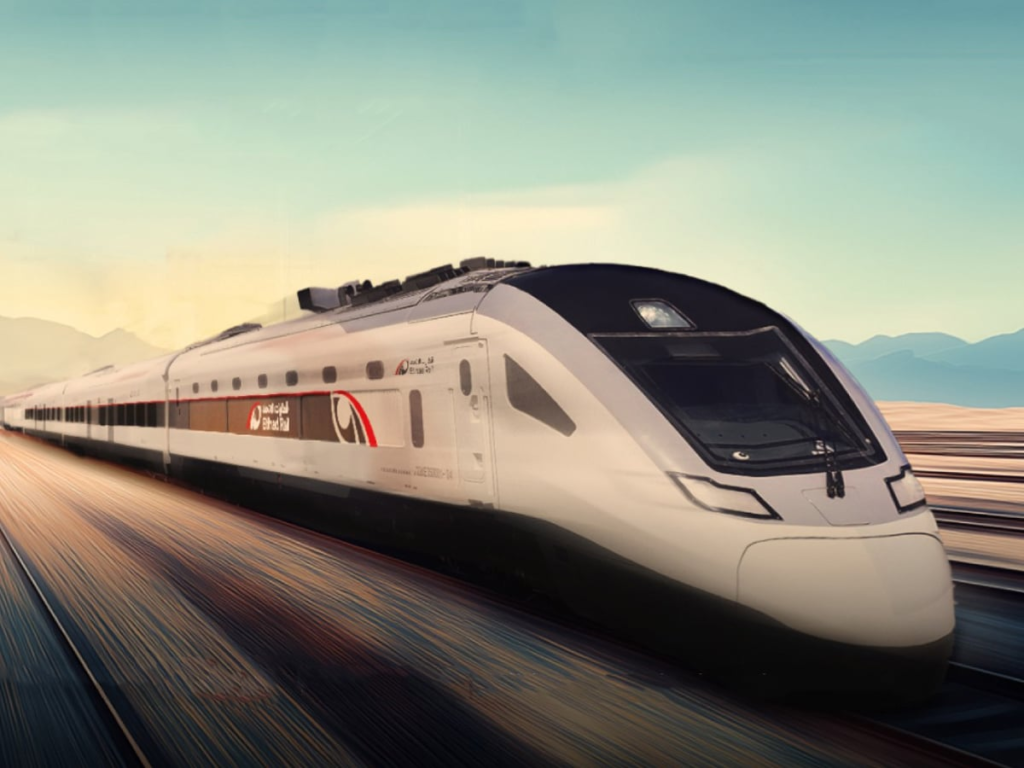The Etihad Rail project stands as a transformative initiative in the UAE’s infrastructure landscape. With an estimated investment of AED 40 billion (approximately $11 billion), this national railway network is set to revolutionize transportation, logistics, and economic integration across the seven emirates.
Connecting the Emirates
Once fully operational, Etihad Rail will span approximately 1,200 kilometers, linking major urban centers, ports, and industrial hubs. The network aims to facilitate the efficient movement of both passengers and freight, reducing travel times and enhancing connectivity between regions. For instance, the rail system will enable travel from Abu Dhabi to Dubai in just 50 minutes and from Abu Dhabi to Fujairah in 100 minutes.

Economic Benefits
The economic impact of Etihad Rail is projected to be substantial. Over the next 40 years, the railway is expected to generate AED 186 billion in economic benefits. These benefits stem from various factors, including:
- Reduced Transportation Costs: Rail transport offers a cost-effective alternative to road freight, potentially lowering logistics expenses for businesses.
- Time Savings: The efficiency of rail travel can lead to significant time savings for both passengers and freight, enhancing productivity.
- Environmental Impact: By reducing reliance on road transport, Etihad Rail is anticipated to decrease carbon emissions, contributing to the UAE’s sustainability goals.
Job Creation and Economic Diversification
The development and operation of Etihad Rail are expected to create thousands of jobs in various sectors, including construction, operations, and maintenance. This job creation aligns with the UAE’s broader economic diversification objectives, reducing dependence on oil revenues and fostering growth in non-oil sectors.
Tourism and Real Estate Development
The improved connectivity provided by Etihad Rail is likely to stimulate tourism by making travel between emirates more convenient. Additionally, areas surrounding rail stations are expected to see increased real estate development, leading to economic growth in these regions.

Environmental Sustainability
Etihad Rail’s commitment to sustainability is evident in its design and operations. The railway is projected to reduce carbon emissions by 70-80% compared to road transport, aligning with the UAE’s environmental goals.
Conclusion
Etihad Rail represents a significant stride towards modernizing the UAE’s transportation infrastructure. Beyond enhancing connectivity, the project promises substantial economic benefits, job creation, and environmental sustainability. As the railway network continues, rail transport offers a cost-effective alternative to road freight, potentially lowering logistics expenses for businesses.
to develop, it is poised to play a pivotal role in shaping the future economic landscape of the UAE. Etihad Rail is more than just a transportation project; it is a catalyst for the UAE’s economic transformation.

By connecting the nation’s major urban centers and integrating with the broader Gulf Cooperation Council (GCC) rail network, Etihad Rail is poised to enhance trade, tourism, and regional cooperation. The projected AED 186 billion in economic benefits over the next 40 years underscores its significance in the UAE’s Vision 2021 and Abu Dhabi Economic Vision 2030.
The project’s emphasis on sustainability, job creation, and infrastructure development aligns with the UAE’s goals of economic diversification and environmental stewardship. As Etihad Rail continues to evolve, it stands as a testament to the nation’s commitment to building a connected, prosperous, and sustainable future.
WATCH MORE HERE: https://www.youtube.com/watch?v=IgAvXMujHrk
READ MORE HERE: https://gulfmagazine.co/gccs-ambitious-railway-a-15-billion-vision-for/


